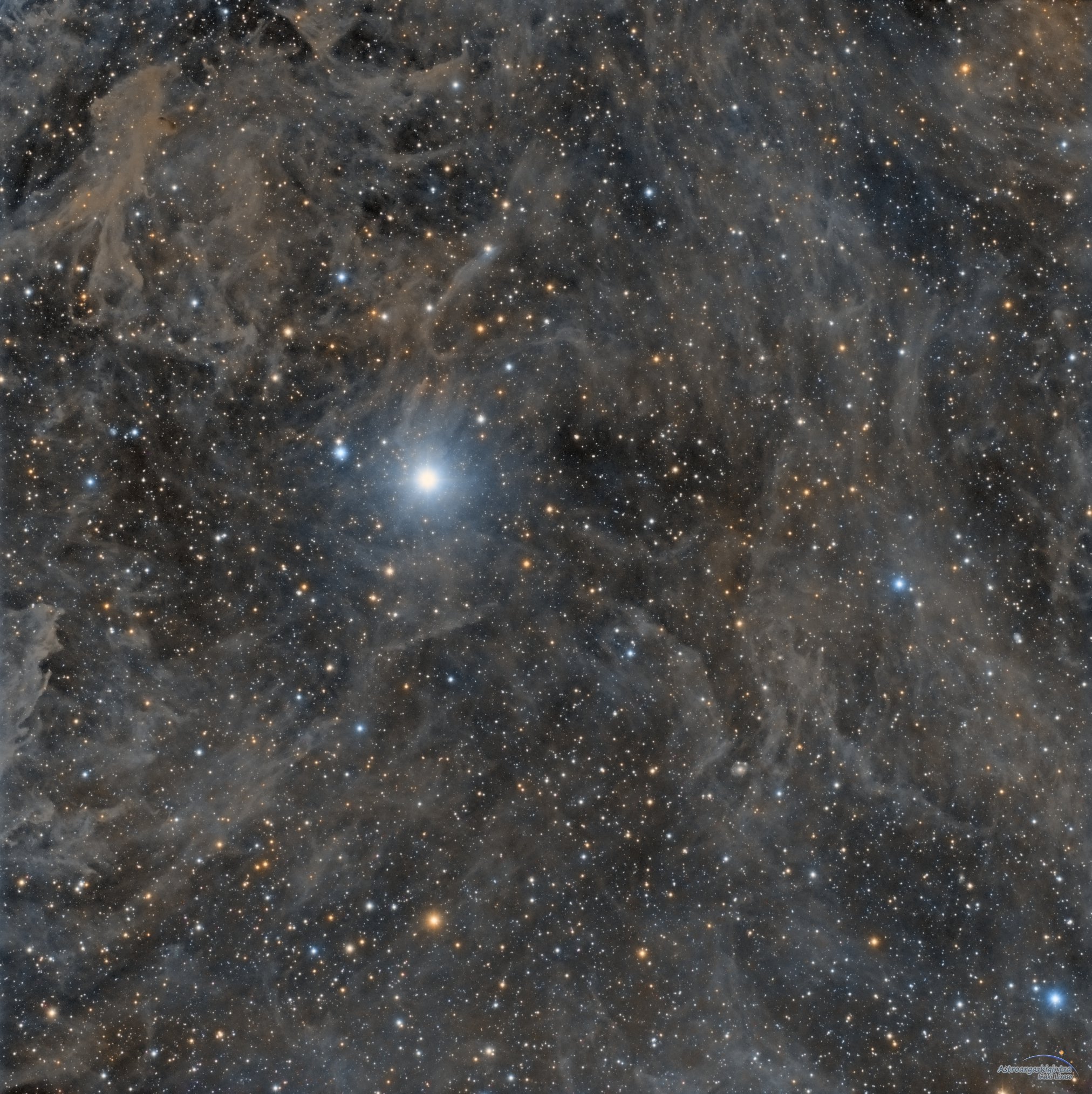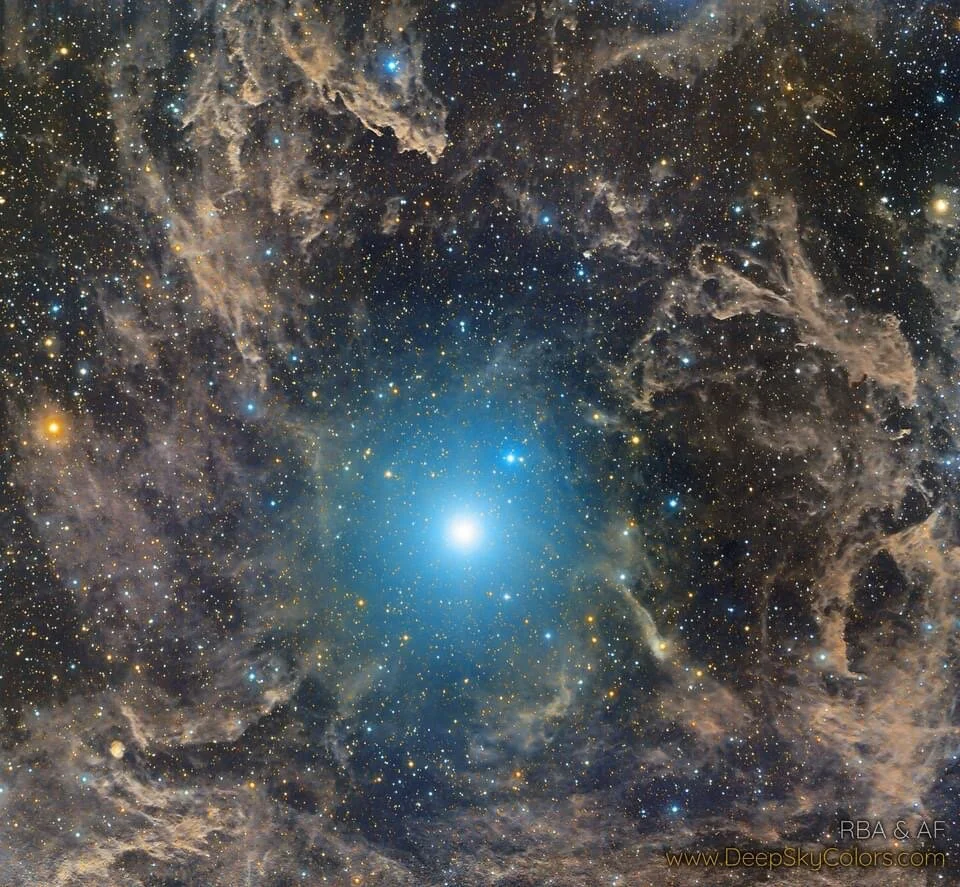
AAPOD2 Image Archives
Polaris, Polarissima Borealis and IFN
Image Description and Details : Polaris is a star in the constellation Ursa Minor. Designated α Ursae Minoris and commonly called the Pole Star. The star's position is less than one degree from the north celestial pole, making it the current north pole star. The entire field is full of Integrated Flux Nebula, high-latitude galactic nebulae in the Milky Way composed primarily of dust particles, hydrogen and carbon monoxide, and are illuminated by stars in the Milky Way. NGC 3172 is located 285 million light years away, known as Polarissima Borealis, being the closest NGC object to the North Celestial Pole.
Copyright: Iñaki Lizaso
Follow your star
Polaris, the Northern Star, and cosmic dust.
(Captured the night of October 9-10, 2021)
Last Saturday night, from the "field of dreams" during Calstar, I tried to find something to photograph in the night sky that would feel a connection with the loss and grief we're experiencing since we said goodbye to Ariana, my soulmate for over 30 years, this past July.
Then, as I was staring at the night sky wiping my tears, I looked to the North... And there it was. What would be more meaningful for someone feeling so lost than the star that has guided the most people in the history of mankind? The star that, for now at least, tells most of us where North is.
There's an expression we use in Spain "No pierdas el norte". It literally means " Don't lose your north" but it's more like: don't drift, stay on course...
Meaning aside, Polaris is also a beautiful (triple) star to photograph. A yellow giant that shines in a bluish white color that also happens to be in the field of view (FOV) of tons of high galactic dust that, with enough exposure, we can get a glimpse of.
Polaris isn't an easy target for a deep capture either, maybe that's why it's not photographed very often (going deep I mean). First, because we can't guide. Guiding allows us to do very long exposures by "following" a star in our FOV, but when you point at the pole, stars don't "move" enough - if anything, they rotate, meaning some stars "move" up, others "move" down, etc. In other words, we can only take exposures as long as our mount and our precision when "polar aligning" (another process required to set up a deep-sky imaging rig) allow. Also, if we want to reveal the very faint high galactic dust surrounding the North Star, we need good skies and as much data (exposure) as we can get.
This image is 14.5 hours of total exposure. 7.25 hours of luminance and another 7.25 hours of RGB (one of my two scopes was capturing the L, the other scope captured the RGB), with all sub-exposures of 3 minutes each, all between 9:30pm and 5:30am that night. Therefore, the image is not outrageously deep, but the data was enough to allow me bringing out all that faint galactic dust somewhat tastefully (going deep isn't enough).
For Ariana, eternally.
Copyright: Rogelio Bernal Andreo



